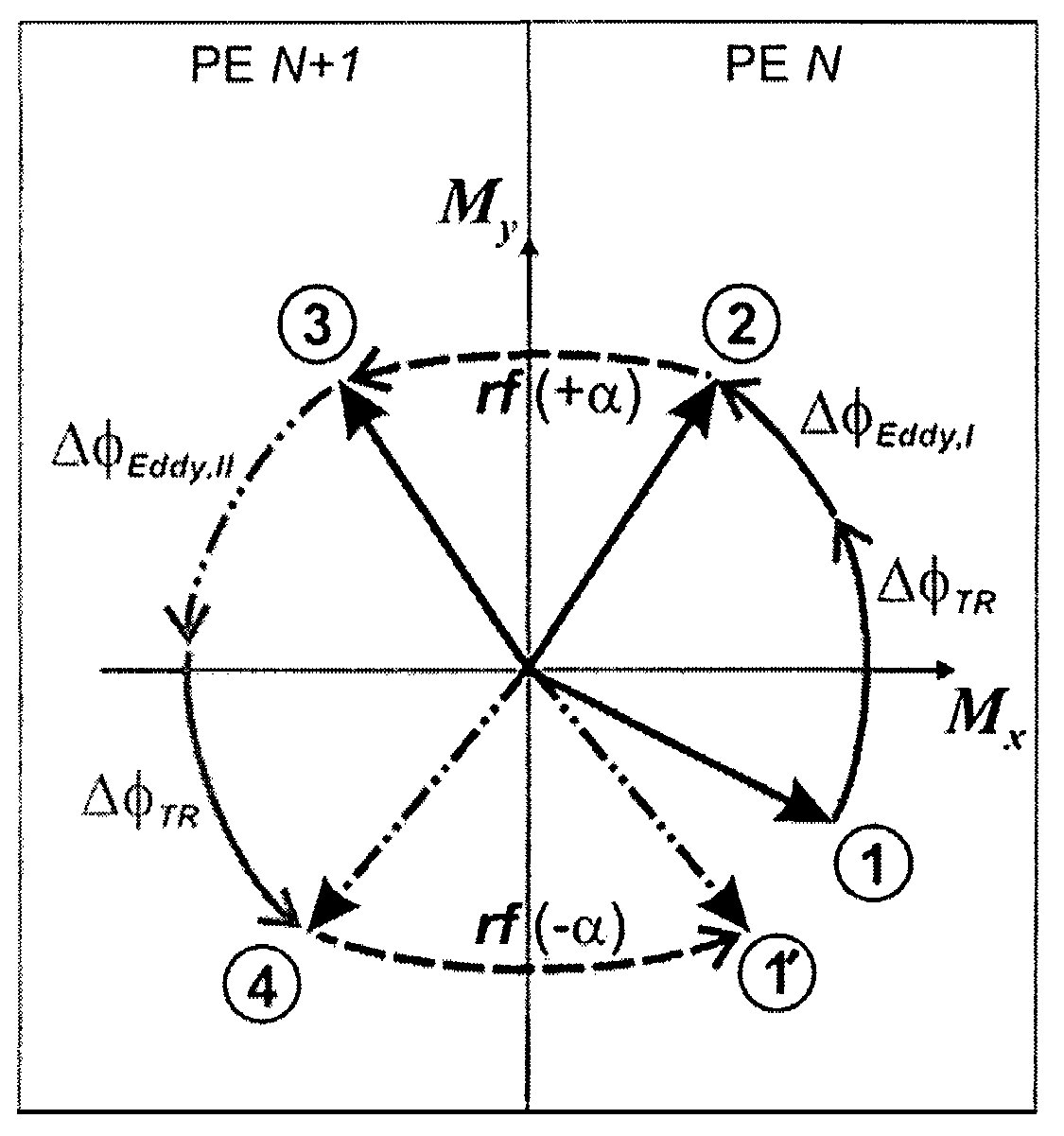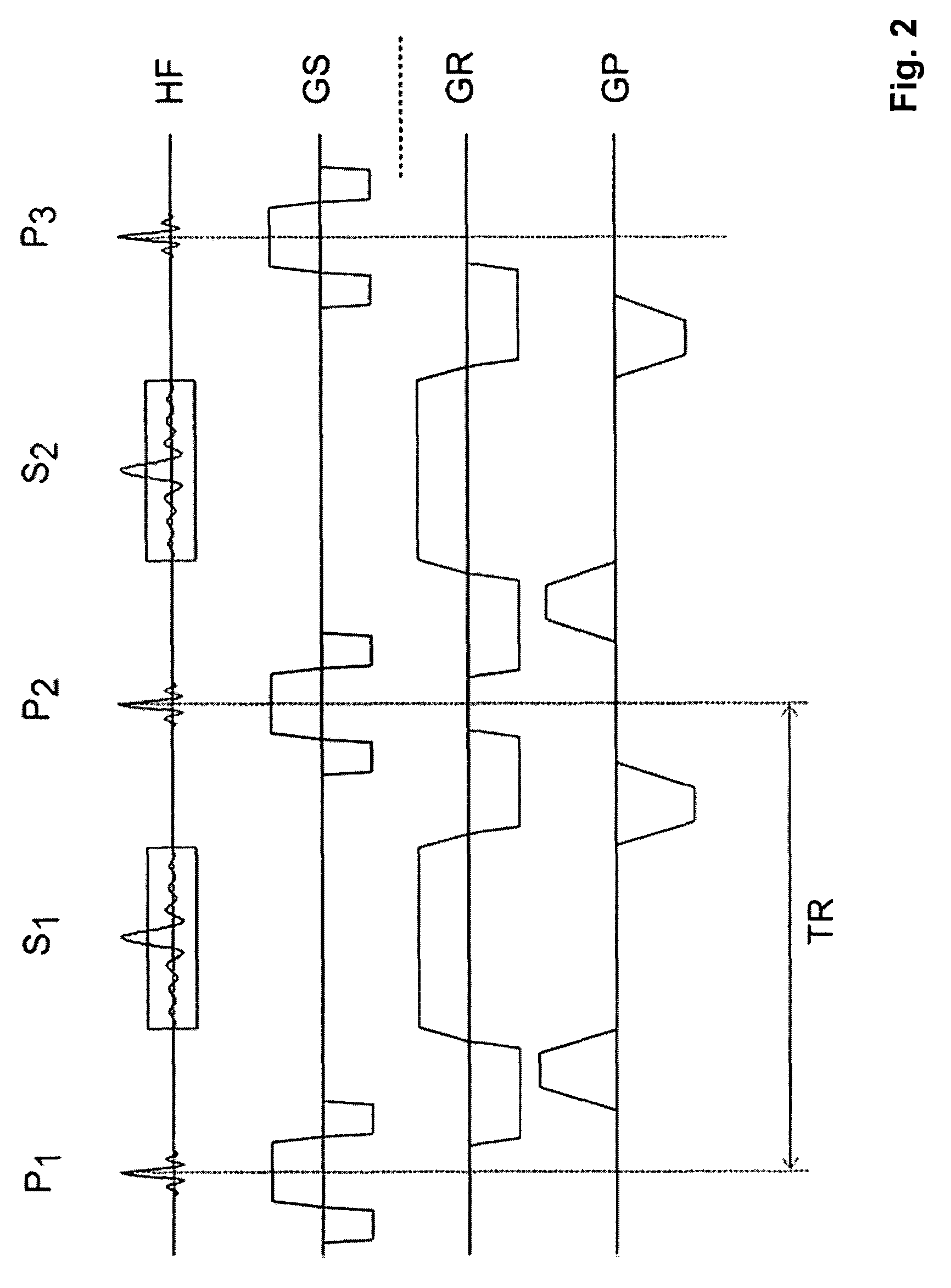Eddy current compensation with N-average SSFP imaging
a gradient echo and compensation method technology, applied in the field of steady-state free precession gradient echo method, can solve the problems of increasing the sensitivity of the method, increasing and increasing the time-variable eddy current effect and hence signal fluctuations, etc., and achieve the effect of compensating the eddy current
- Summary
- Abstract
- Description
- Claims
- Application Information
AI Technical Summary
Benefits of technology
Problems solved by technology
Method used
Image
Examples
Embodiment Construction
[0029]FIG. 3A also shows the function in case of ideal eddy current correction for N=2 (double average SSFP imaging). FIG. 3A shows the temporal development of the transverse component of the MRT magnetization vector in the steady state for two successive data acquisition intervals ((1)->(2) and (3)->(4)) and RF excitations with flip angle α(rf(+α) and rf(−α)). The temporal development of the MRT signal and associated potential signal oscillations are determined by the temporal development of position and absolute value of the magnetization vector. The paired acquisition of identical phase encoding amplitudes reproduces identical signal phases (Δφeddy) induced by eddy currents in successive data acquisition intervals. These analogously add up to the temporally constant signal phases from off-resonances (ΔφTR) in both configurations of the dual steady state such that the dual magnetization configurations are identically transferred into one another despite of eddy current effects. Th...
PUM
 Login to View More
Login to View More Abstract
Description
Claims
Application Information
 Login to View More
Login to View More - R&D
- Intellectual Property
- Life Sciences
- Materials
- Tech Scout
- Unparalleled Data Quality
- Higher Quality Content
- 60% Fewer Hallucinations
Browse by: Latest US Patents, China's latest patents, Technical Efficacy Thesaurus, Application Domain, Technology Topic, Popular Technical Reports.
© 2025 PatSnap. All rights reserved.Legal|Privacy policy|Modern Slavery Act Transparency Statement|Sitemap|About US| Contact US: help@patsnap.com



